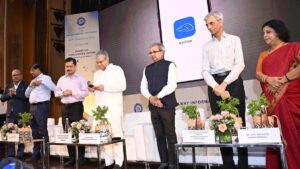Table of Contents
Context: Recently there has been an escalation in the long-standing territorial dispute between India and Nepal over the inclusion of areas administered by India in Uttarakhand on a new Nepalese Rs 100 currency note.
India Nepal Border Issue Background
- Territorial Claim: The dispute centres around a 372 sq km area at the India-Nepal-China trijunction in Uttarakhand’s Pithoragarh district, encompassing Limpiadhura, Lipulekh, and Kalapani.
- The Treaty of Sugauli concluded the Anglo-Nepalese War (1814-16), resulting in Nepal ceding territories east of the Kali River to the East India Company.
- Cartographic Evidence:
- British Surveyor General of India’s maps from 1819, 1821, 1827, and 1856 depicted the Kali River as originating from Limpiadhura.
- An 1879 map renamed the river to “Kuti Yangti” in the local language.
- The 1920-21 map retained the name but identified a different stream as “Kali”, which originated near a temple and joined the mainstream a kilometre downstream.
- The final British map before their departure in 1947 reverted to showing the Kali River starting at Limpiadhura.
- Demographic and Administrative Details: Villages such as Gunji, Nabhi, Kuti, and Kalapani (also known as Tulsi Nyurang and Nabhidang) were included in the Nepali government’s census until 1962, with residents paying land revenue to Kathmandu.
- Strategic Use During the Sino-Indian Conflict: During the 1962 India-China war, Indian Prime Minister Jawaharlal Nehru sought permission from King Mahendra of Nepal to use the strategically located Kalapani area as a base for the Indian Army.
- Unresolved Diplomatic Talks: Former Nepali Foreign Minister (2005-06) and Ambassador to India (1997-2003), Dr. Bhekh Bahadur Thapa, noted that despite claims by Indian officials that King Mahendra had gifted the area to India, the territorial issue remains unresolved.
Recent Developments of India-Nepal Border Dispute
- Nepal’s Parliamentary Action: In 2020, Nepal’s Parliament unanimously adopted a new map including the disputed area, which has been printed on the newly issued Rs 100 currency notes.
- Indian Response: India has consistently called for diplomatic resolution based on historical evidence and maintains that such unilateral moves by Nepal do not alter the actual situation on the ground.

Diplomatic Efforts and Statements
- Bilateral Talks: Various Indian Prime Ministers, including I.K. Gujral and Atal Bihari Vajpayee, have assured Nepali leaders over the years of India’s commitment to resolve the issue through dialogue.
- Similarly, during Narendra Modi’s 2014 visit to Nepal, agreements were made to expedite the settlement of boundary disputes, though no significant progress has been made.
- Recent Political Changes: The decision to print the new map on the currency followed the inclusion of K.P. Sharma Oli’s party in the ruling coalition.
- Oli had previously led efforts to formalise the new map in Nepal’s Parliament.
India Nepal Broader Bilateral Relations
- 2015 Blockade: Relations between the two countries were strained following a blockade in 2015, which Nepal attributed to India.
- This led Nepal to seek enhanced trade and transit arrangements with China.
- Strategic Shifts: Despite historical ties, Nepal has increasingly sought to balance its geopolitical stance between its two giant neighbours, India and China, particularly in the face of recurring disputes with India.
Public and Political Reactions
- Internal Criticism in Nepal: The decision to include the disputed map on the currency has been met with criticism within Nepal, including from economic advisors and opposition parties, who view it as provocative and unwise.
- Future Outlook: Experts suggested that unresolved border issues can lead to long-term problems, advocating for resolution through diplomatic engagement rather than unilateral actions.


 RailOne App: Indian Railways Launches Al...
RailOne App: Indian Railways Launches Al...
 Special Intensive Revision (SIR) of Elec...
Special Intensive Revision (SIR) of Elec...
 Daily Quiz 01 July 2025
Daily Quiz 01 July 2025





















